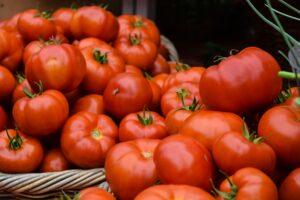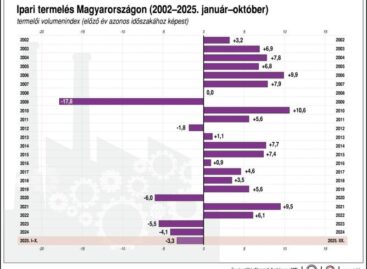Tomatoes have become more expensive
Based on recent data from the KSH, it was revealed that the price of tomatoes and peppers rose significantly in January 2024, and the price of red onions also rose. Based on the annual comparison, the price of tomatoes increased by 21 percent and that of peppers by 17 percent compared to the previous year. The price of red onions also rose and was 13 percent more expensive than a year earlier. All of this means that vegetable prices have risen by nearly two-thirds over the past two years.
 In the background of the price increase, the product council identifies an increase in packaging costs and an increase in the costs of traders. For retailers, these additional costs can be a challenge, resulting in further price increases. However, at the same time as prices rise, the quantity sold also decreases, which clearly affects the wallets of customers.
In the background of the price increase, the product council identifies an increase in packaging costs and an increase in the costs of traders. For retailers, these additional costs can be a challenge, resulting in further price increases. However, at the same time as prices rise, the quantity sold also decreases, which clearly affects the wallets of customers.
The rise in prices affects the entire food industry, and unfortunately, this rise does not spare Hungarian fruits either. The Agrárgazdasági Kamara expressed concern for Hungarian fruits, especially with regard to the danger of a possible spring frost, which could cause serious damage to the summer crop. The chamber warns that a similar spring frost already caused significant damage in April 2023, and similar risks exist now.
Related news
Apples have become significantly more expensive in Hungary
🎧 Hallgasd a cikket: Lejátszás Szünet Folytatás Leállítás Nyelv: Auto…
Read more >KSH: industrial production decreased by 2.7 percent in October compared to the same period of the previous year, and increased by 0.5 percent compared to the previous month
🎧 Hallgasd a cikket: Lejátszás Szünet Folytatás Leállítás Nyelv: Auto…
Read more >The price of slaughter pigs has decreased in Hungary and in the EU
🎧 Hallgasd a cikket: Lejátszás Szünet Folytatás Leállítás Nyelv: Auto…
Read more >Related news
Extended holiday opening hours at MediaMarkt
🎧 Hallgasd a cikket: Lejátszás Szünet Folytatás Leállítás Nyelv: Auto…
Read more >K&H: more and more middle-aged people live in their own apartments
🎧 Hallgasd a cikket: Lejátszás Szünet Folytatás Leállítás Nyelv: Auto…
Read more >Egg prices up nearly one-third
🎧 Hallgasd a cikket: Lejátszás Szünet Folytatás Leállítás Nyelv: Auto…
Read more >






